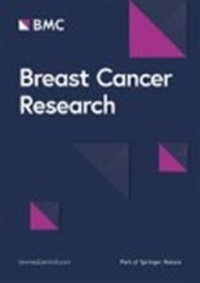蚊虫控制暴露与乳腺癌风险:对加纳乳房健康研究中的 1071 例病例和 2096 例对照的分析
IF 6.1
1区 医学
Q1 ONCOLOGY
引用次数: 0
摘要
有关杀虫剂暴露和乳腺癌风险的流行病学数据尚无定论,且大多来自高收入国家。利用加纳乳房健康研究(Ghana Breast Health Study)在 2013 年至 2015 年期间收集的 1071 例经病理证实的侵袭性乳腺癌病例和 2096 例对照者的数据,我们调查了蚊虫控制产品与减少疟疾等蚊媒疾病传播的关系。这些防蚊产品包括驱虫蚊帐、蚊香、室内驱蚊喷雾剂和个人防蚊护肤霜。我们使用多变量和多项式逻辑回归模型来估计乳腺癌风险的几率比(ORadj)和 95% 的置信区间(CI),并对潜在的混杂因素和已知的风险因素进行了调整。在对照组中,报告使用的灭蚊产品是蚊香(65%),其次是驱虫蚊帐(56%)、驱蚊室内喷雾剂(53%)和驱蚊护肤霜(15%)。与未接触过灭蚊产品的参照组相比,乳腺癌风险与蚊香之间没有显著关联。据报告,乳腺癌风险与使用驱虫蚊帐之间存在关联;但是,这种关联很弱,在统计学上并不显著。与不使用任何灭蚊产品的妇女相比,报告使用驱蚊喷雾的参与者患乳腺癌的风险更高,即使在对所有其他灭蚊产品进行调整后也是如此(OR = 1.42,95% CI=1.15-1.75)。我们检测驱蚊护肤霜相关性的能力有限。尽管只有少数参与者表示每周/每天或 0.25 次使用驱蚊室内喷雾。)在确定驱蚊护肤霜是否存在关联时,我们的分析是有限的;因此,我们无法得出结论。我们发现与广泛使用的蚊香和驱虫蚊帐有关的风险证据有限,鉴于它们对预防疟疾的重要性,这一点令人欣慰。我们关于特定乳腺癌风险关联的研究结果,特别是驱蚊喷雾剂之间的关联,还需要进一步研究。本文章由计算机程序翻译,如有差异,请以英文原文为准。
Mosquito control exposures and breast cancer risk: analysis of 1071 cases and 2096 controls from the Ghana Breast Health Study
Epidemiologic data on insecticide exposures and breast cancer risk are inconclusive and mostly from high-income countries. Using data from 1071 invasive pathologically confirmed breast cancer cases and 2096 controls from the Ghana Breast Health Study conducted from 2013 to 2015, we investigated associations with mosquito control products to reduce the spread of mosquito-borne diseases, such as malaria. These mosquito control products were insecticide-treated nets, mosquito coils, repellent room sprays, and skin creams for personal protection against mosquitos. Multivariable and polytomous logistic regression models were used to estimate odds ratios (ORadj) and 95% confidence intervals (CI) with breast cancer risk-adjusted for potential confounders and known risk factors. Among controls, the reported use of mosquito control products were mosquito coils (65%), followed by insecticide-treated nets (56%), repellent room sprays (53%), and repellent skin creams (15%). Compared to a referent group of participants unexposed to mosquito control products, there was no significant association between breast cancer risk and mosquito coils. There was an association in breast cancer risk with reported use of insecticide-treated nets; however, that association was weak and not statistically significant. Participants who reported using repellent sprays were at elevated risks compared to women who did not use any mosquito control products, even after adjustment for all other mosquito control products (OR = 1.42, 95% CI=1.15–1.75). We had limited power to detect an association with repellent skin creams. Although only a few participants reported using repellent room sprays weekly/daily or < month-monthly, no trends were evident with increased frequency of use of repellent sprays, and there was no statistical evidence of heterogeneity by estrogen receptor (ER) status (p-het > 0.25). Our analysis was limited when determining if an association existed with repellent skin creams; therefore, we cannot conclude an association. We found limited evidence of risk associations with widely used mosquito coils and insecticide-treated nets, which are reassuring given their importance for malaria prevention. Our findings regarding specific breast cancer risk associations, specifically those observed between repellent sprays, require further study.
求助全文
通过发布文献求助,成功后即可免费获取论文全文。
去求助
来源期刊

Breast Cancer Research
医学-肿瘤学
自引率
0.00%
发文量
76
期刊介绍:
Breast Cancer Research is an international, peer-reviewed online journal, publishing original research, reviews, editorials and reports. Open access research articles of exceptional interest are published in all areas of biology and medicine relevant to breast cancer, including normal mammary gland biology, with special emphasis on the genetic, biochemical, and cellular basis of breast cancer. In addition to basic research, the journal publishes preclinical, translational and clinical studies with a biological basis, including Phase I and Phase II trials.
 求助内容:
求助内容: 应助结果提醒方式:
应助结果提醒方式:


